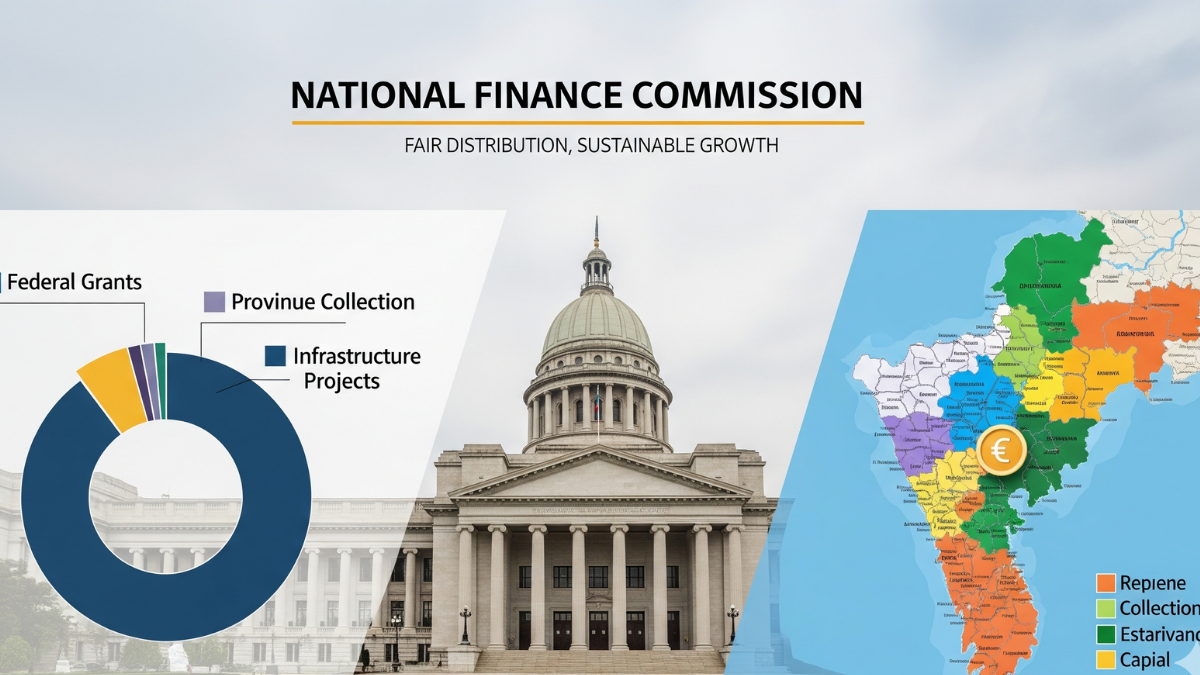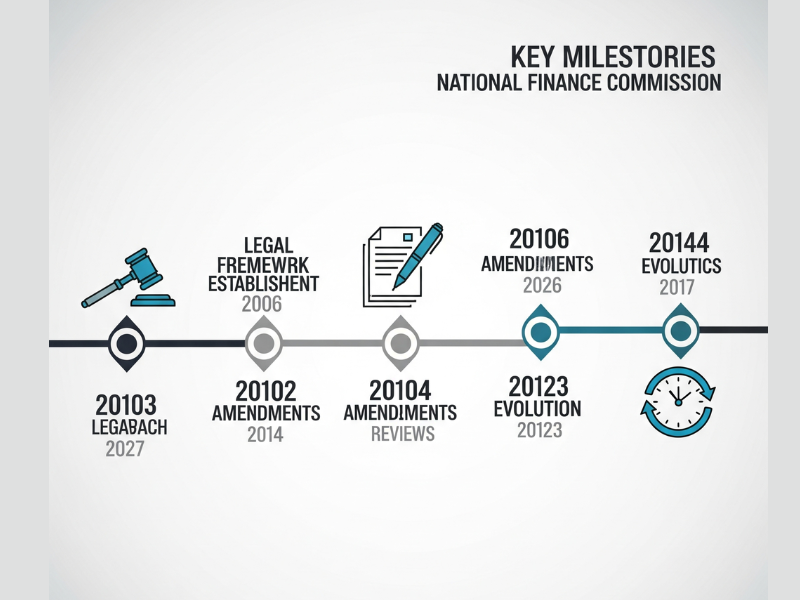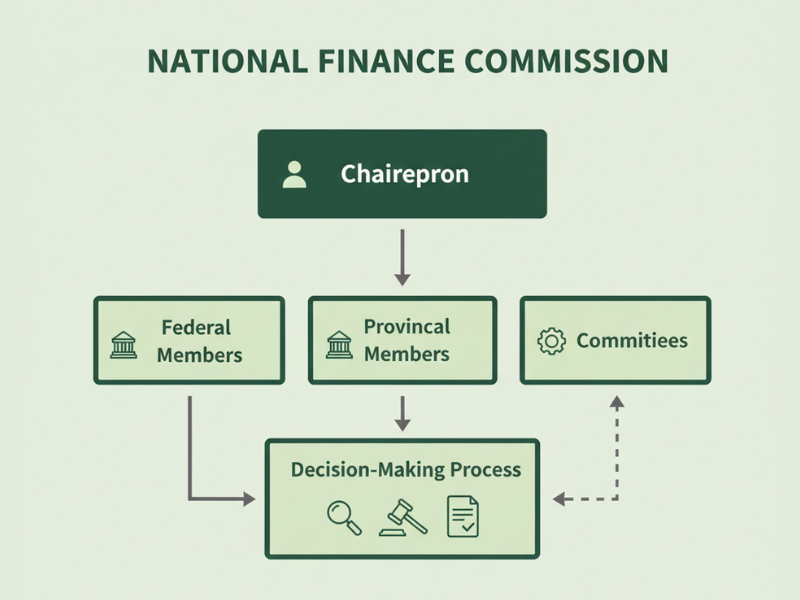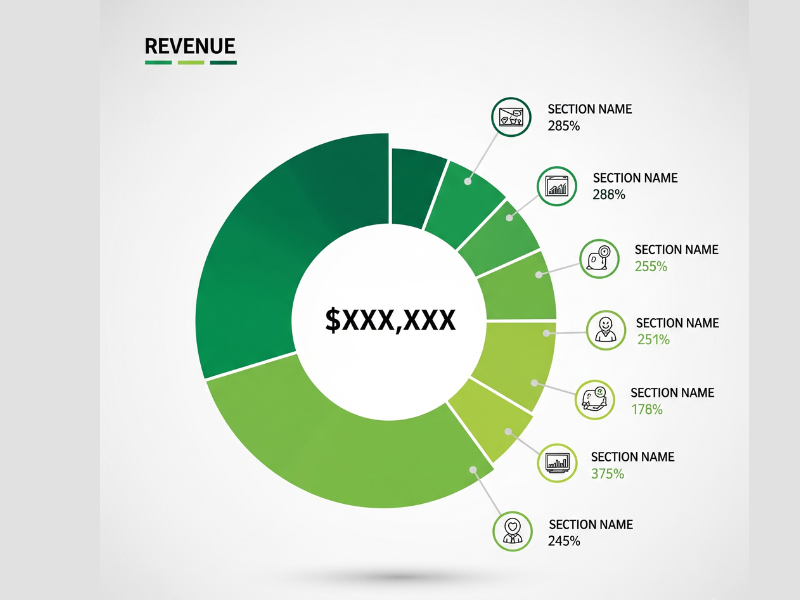Physical Address
304 North Cardinal St.
Dorchester Center, MA 02124
Physical Address
304 North Cardinal St.
Dorchester Center, MA 02124

Have you ever wondered how government resources are distributed across provinces and states? That’s where the National Finance Commission (NFC) comes into play! Established to ensure fair fiscal allocation, the NFC plays a critical role in shaping economic policies and funding priorities. In this article, we’ll break down what is National Finance Commission, how it works, and why it matters to both governments and citizens alike. Whether you’re a student, policy enthusiast, or just curious about finance, understanding the NFC is essential for grasping how public funds are shared and managed.

The National Finance Commission (NFC) was created to ensure fair distribution of federal revenues among provinces. Before its formation, allocations were often arbitrary, favoring richer regions while leaving poorer provinces underfunded. The legal foundation comes from the constitution, giving the NFC authority to recommend revenue-sharing formulas and promote fiscal balance.
One major milestone was introducing clear criteria for revenue distribution, including population, poverty levels, and development needs. Another important step was the establishment of periodic awards, ensuring that revenue-sharing decisions were revisited systematically. Over time, reforms strengthened transparency and predictability in how the NFC operated.
The NFC is grounded in constitutional law, specifically Article 160, which outlines its powers and responsibilities. These provisions define the scope of its authority, giving the commission legitimacy to negotiate allocations and advise the government on fiscal matters. Without this constitutional backing, the NFC’s recommendations wouldn’t carry legal weight.
Amendments over the years refined how population and development indicators are considered in revenue-sharing formulas. Some reforms introduced strict timelines for issuing awards, while others improved transparency in decision-making. These changes helped the NFC adapt to shifting economic and political realities.
Looking at the NFC’s history helps explain why certain provinces receive larger shares of federal revenue today. The evolution of its rules, milestones, and reforms all contribute to the current system, which balances fairness with practical governance. Understanding this context is crucial for anyone trying to grasp debates on fiscal allocation and provincial development.
At its core, the NFC exists to make sure that federal revenues are shared fairly among provinces. The goal is simple but crucial: no province should feel shortchanged while others receive a bigger slice of the financial pie. This ensures every region can fund essential services like health, education, and infrastructure without relying solely on local resources.
The NFC strengthens fiscal federalism by giving provinces a fair share of federal revenues while allowing them flexibility in how they use their funds. This balance helps maintain harmony between central and provincial governments. Fiscal federalism isn’t just theory, it’s practical, giving local governments the resources they need to address unique regional challenges.
Revenue allocation is never just about numbers; it’s about balance. The NFC ensures that the central government retains enough for national priorities while provinces get enough to manage local projects. This balancing act prevents over-concentration of funds at the center and encourages equitable development across the country.
Recent NFC awards have focused on population-based allocation, incorporating backwardness and poverty indicators to adjust shares. For instance, provinces with historically low development indicators received increased funding to bridge disparities. These examples show that the NFC isn’t static; it adapts to demographic and economic realities to meet its objectives.
By promoting fair distribution, the NFC helps stabilize provincial finances and enables long-term planning. Provinces can invest in infrastructure, education, and social programs with confidence, which in turn fosters economic growth and reduces regional inequalities. Over time, this leads to a more balanced and resilient economy that benefits all citizens.

The NFC’s members are appointed by the federal government, usually including representatives from both the center and the provinces. This ensures that all regions have a voice in revenue-sharing decisions. The government plays a key role in nominating qualified individuals, balancing expertise and regional representation.
The commission includes a chairperson, federal representatives, and provincial members. Each member has specific responsibilities, such as reviewing data, analyzing fiscal needs, and contributing to final recommendations. These positions are crucial for ensuring that decisions are both informed and fair.
Within the NFC, committees or working groups often handle specific tasks like population analysis, economic indicators, or development needs. These subgroups help streamline discussions and provide detailed reports that feed into the commission’s overall recommendations.
The NFC typically meets periodically, especially before issuing new awards. Meetings may last several days to review proposals, data, and policy implications. Regular meetings ensure that revenue-sharing remains up-to-date with demographic and economic changes.
Decisions within the NFC are made through a combination of consensus-building and formal voting when needed. Each member has a say in reviewing allocation formulas, and disagreements are resolved through discussion and negotiation. This structured process helps maintain transparency and fairness in revenue distribution.
One of the primary responsibilities of the NFC is to allocate federal revenue among provinces. This ensures that every region receives funding proportionate to its population, development needs, and economic status. Without this structured allocation, some provinces could struggle to fund essential services like education, health, and infrastructure.
The NFC carefully examines each province’s fiscal needs and gaps. This includes analyzing revenue shortfalls, poverty levels, and development priorities. By understanding these disparities, the commission can adjust allocations to promote more balanced economic growth across the country.
Beyond revenue distribution, the NFC advises the federal government on overall financial management. This includes recommendations on fiscal policies, budget planning, and strategies to enhance equitable development. Their guidance helps ensure that both national and provincial funds are used efficiently.
Transparency is a key part of the NFC’s role. The commission prepares detailed reports outlining allocation decisions, the criteria used, and any assumptions behind revenue-sharing formulas. These reports help build trust among provinces and the public, ensuring accountability in how federal funds are distributed.
Past NFC awards demonstrate the real-world impact of the commission’s work. For example, provinces with historically low development indicators often received higher shares to bridge economic gaps. Examining these cases provides insight into how the NFC promotes equity and supports regional development over time.

The NFC uses several key criteria to determine how federal revenue is shared. Population size, poverty levels, and regional development indicators are major factors. These criteria ensure that allocations are not arbitrary but based on measurable needs.
Population is often the largest factor in revenue distribution, but it’s not the only one. Poverty rates and development indicators help the NFC adjust allocations so that underdeveloped provinces receive adequate support. This approach promotes fairness and helps reduce regional inequalities.
Despite clear criteria, achieving perfectly fair distribution is challenging. Population data can be outdated, and political pressures sometimes complicate negotiations. Provinces with rapidly growing populations or unique economic challenges may feel their needs aren’t fully addressed.
Recent NFC awards have incorporated backwardness and development indices to adjust allocations. For example, provinces with lower literacy rates or limited infrastructure received increased shares in recent formulas. These examples show how the commission adapts to changing demographics and economic realities.
Revenue distribution can spark debates, especially when provinces feel underrepresented. Disagreements over population data, poverty weighting, or development indicators occasionally lead to public discussions and calls for reform. These debates highlight the NFC’s crucial role in balancing competing regional interests.
NFC awards play a major role in shaping provincial budgets. Provinces rely on these funds to plan everything from education programs to infrastructure projects. When allocations are predictable and fair, provincial governments can invest confidently in long-term development initiatives.
Fair revenue distribution allows provinces to fund social welfare programs, improve schools, and build roads, hospitals, and utilities. These investments directly improve citizens’ quality of life. Over time, such projects help reduce regional disparities and foster economic growth.
By adjusting allocations based on population, poverty, and development indicators, the NFC helps reduce fiscal inequality between provinces. Regions that were historically underfunded receive more support, giving them a better chance to catch up with wealthier provinces.
Several provinces have seen tangible benefits from NFC awards. For instance, increased funding in less developed regions has enabled new infrastructure projects, better healthcare access, and improved educational facilities. These examples show the direct link between NFC decisions and provincial development.
Looking forward, the NFC has the potential to further enhance economic balance by refining allocation formulas and incorporating more real-time data. Continuous adjustments based on population growth, development needs, and fiscal disparities will help provinces plan more effectively and support sustainable growth nationwide.

Despite its important role, the NFC faces criticism from some policymakers and analysts. Critics argue that the commission sometimes fails to fully address the unique needs of each province. Concerns also arise over outdated population data or incomplete economic indicators.
Transparency remains a frequent challenge. Political influence can affect negotiations, leading to debates over whether certain provinces receive more than their fair share. These concerns underscore the importance of maintaining impartiality and clear reporting.
Even with well-defined formulas, regional disparities persist. Provinces with rapidly changing populations or unusual development needs may still face gaps in funding. Addressing these limitations requires constant review and flexibility in the allocation process.
Experts often suggest reforms such as updating population and economic data more frequently, incorporating additional indicators for development, and increasing stakeholder participation. These improvements could make allocations more accurate and equitable.
Past NFC awards highlight both successes and areas for improvement. While some provinces have benefited significantly, others still face challenges. Learning from these experiences helps refine future allocation formulas and strengthens the overall system.
The National Finance Commission is more than just a bureaucratic body, it’s a key player in ensuring fair and transparent fiscal management. Understanding what is National Finance Commission helps us appreciate how public resources are allocated and how government policies impact economic development. By staying informed, we can better grasp debates around revenue sharing, fiscal federalism, and regional growth. If you found this guide helpful, share your thoughts or experiences with NFC awards in the comments below!
Want to dive deeper into financial topics? Check out our other guides:
The National Finance Commission, often referred to as NFC, is a constitutional body responsible for distributing federal revenue among provinces. If you’ve ever wondered what is National Finance Commission, its main purpose is to ensure fair and equitable allocation of funds so that all provinces can meet their development and public service needs.
When asking what is National Finance Commission, it’s important to know that the NFC uses population, poverty levels, and development indicators to divide federal funds. These criteria make the distribution process transparent and fair, addressing both economic disparities and regional needs.
The NFC is composed of representatives from the federal government and all provinces. Understanding what is National Finance Commission also includes knowing that its members review revenue-sharing formulas, analyze fiscal requirements, and make recommendations to the government.
The NFC issues periodic awards, usually every few years, to adjust revenue distribution based on updated data. If you’re curious about what is National Finance Commission and its operations, these awards reflect changes in population, development indicators, and provincial needs.
The impact of the NFC is significant. Provinces use its recommendations to fund infrastructure projects, social programs, and essential services. Asking what is National Finance Commission helps people understand how this body directly affects economic development and fiscal balance across the country.
Yes! Discussions about reforms often focus on improving transparency, updating population data, and refining allocation formulas. Knowing what is National Finance Commission includes recognizing that its structure and processes evolve over time to better serve all provinces.
Understanding what is National Finance Commission is essential for anyone interested in government finance, fiscal policy, or regional development. It shows how public funds are shared, why certain provinces receive more, and how fiscal federalism operates in practice.